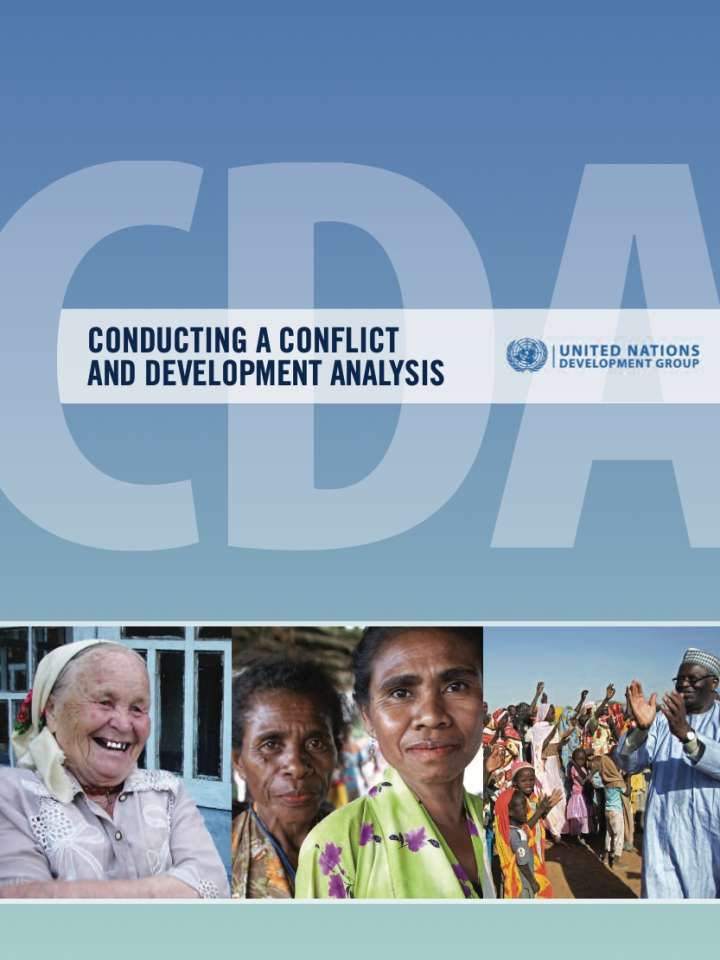Conducting a Conflict and Development Analysis (CDA)
The Conflict and Development Analysis (CDA) is a tool that assists with analysing a specific context and developing strategies for reducing or eliminating the impact and consequences of violent conflict. It provides a deeper understanding of the issues that can drive conflict and the dynamics that have the potential to promote peace in a wide variety of countries where the United Nations (UN) operates. The CDA has been developed as a versatile tool for UN staff and other practitioners.
In specific, Module Eleven provides an overview of the aspects that need to be taken into account when conducting a conflict analysis in a disaster setting; it also provides information concerning the importance of using conflict analysis to inform a Post-Disaster Needs Assessment (PDNA) and Recovery Framework in a conflict setting, in order to ensure a ‘do no harm’ approach is incorporated into the engagement.
Conflict analysis can support the effective and efficient implementation of the PDNA by:
- Ensuring the PDNA is informed by a deep understanding of the dynamics between stakeholders and an appreciation of relevant peace engines and conflict drivers that practitioners should be aware of in order to avoid adverse effects;
- Reinforcing national participation in and local ownership of the process. Since the PDNA is a consultative and inclusive process, the stakeholders that contribute to the PDNA could, when applicable, also be consulted for conflict analysis purposes;
- Ensuring that implementation of the recovery framework is conflict-sensitive;
- Promoting a more holistic and collaborative approach between humanitarian, development, political and peacebuilding actors, as and where appropriate.
Explore further
